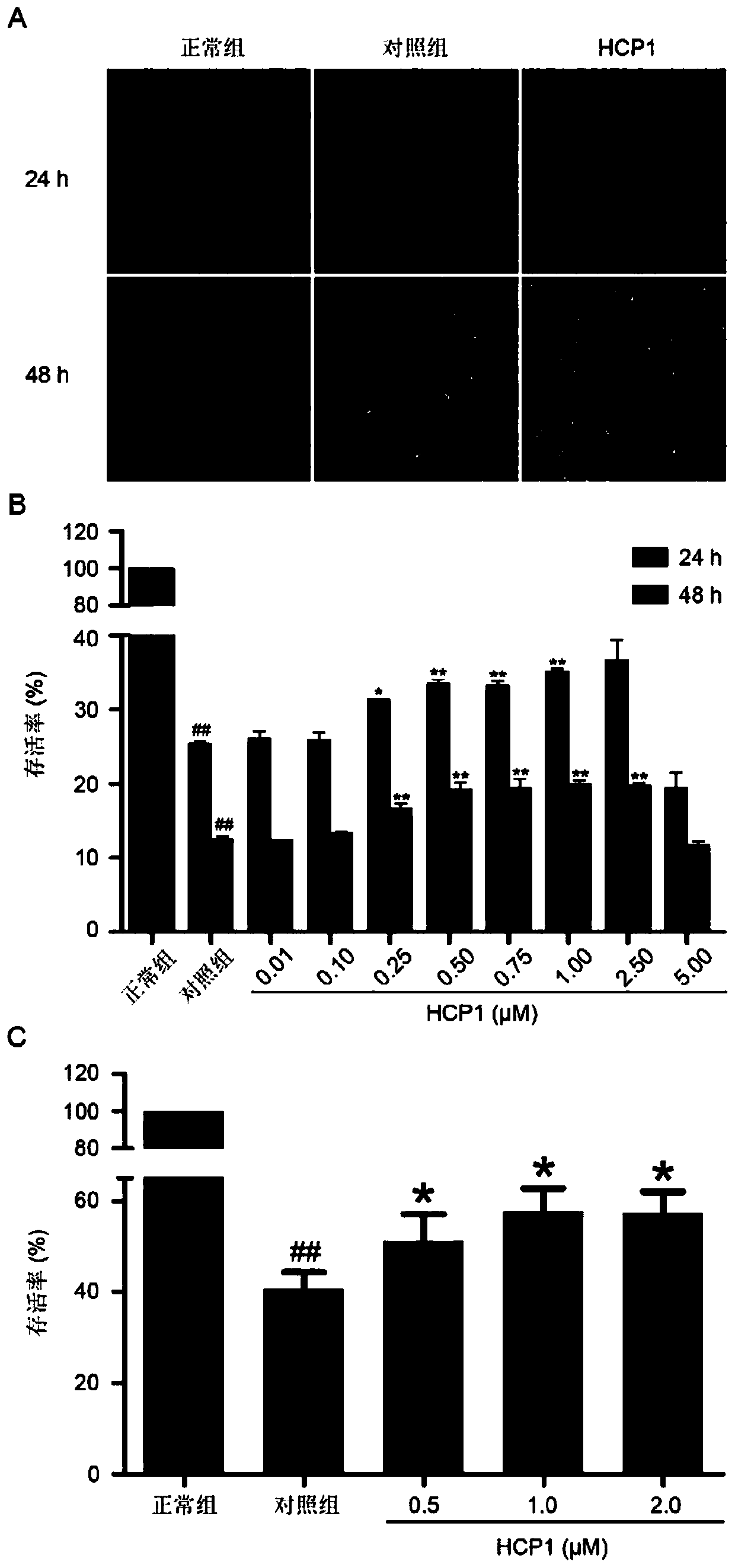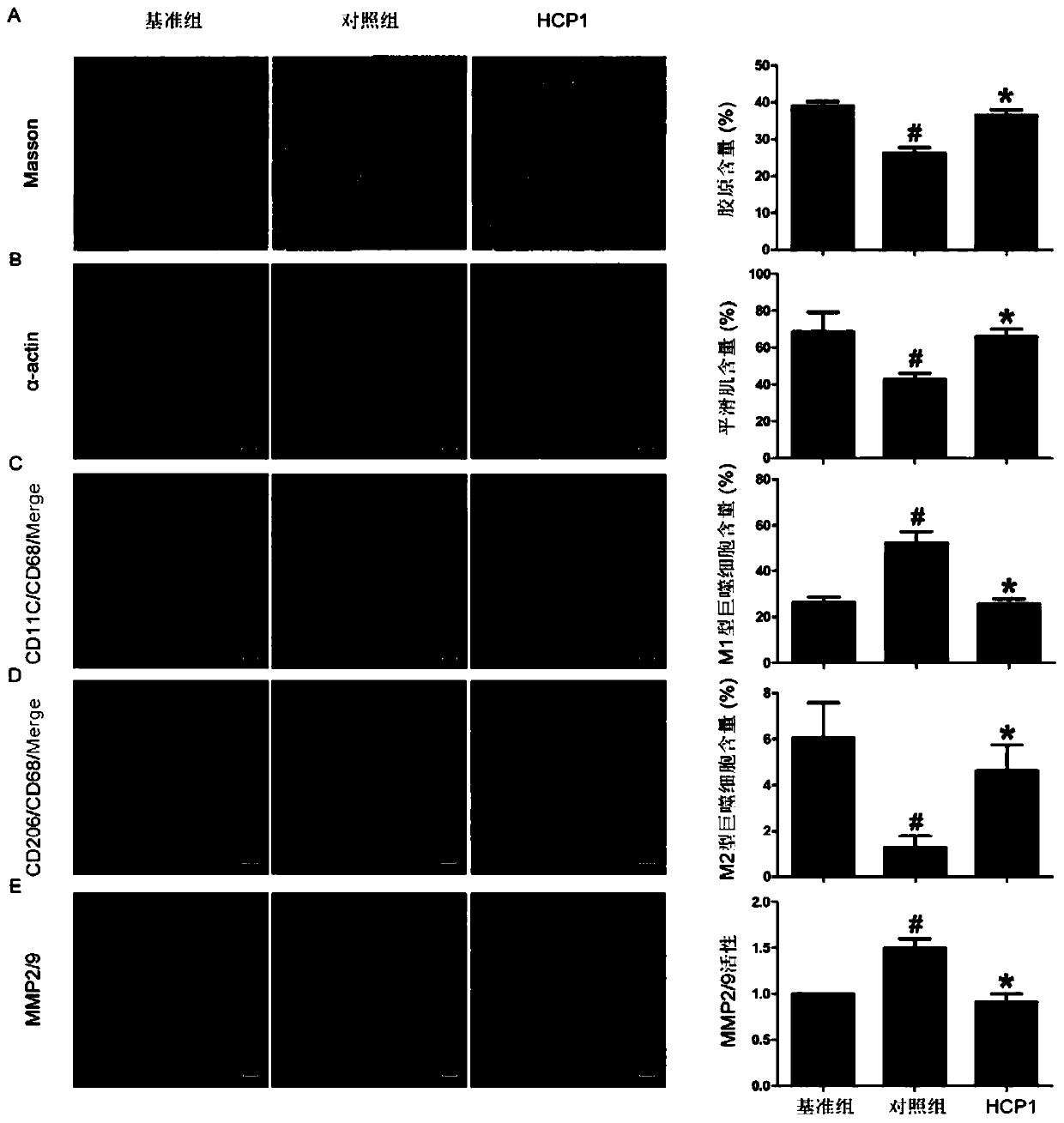Application of 7-hydroxycoumarin pyrazoline derivatives in the preparation of drugs for stabilizing arteriosclerotic plaques
A technology of arteriosclerosis and pyrazole, applied in the application field of 7-hydroxycoumarin pyrazoline derivatives in the preparation of drugs for stabilizing arteriosclerotic plaques, to achieve the effects of improving stability, improving plaque structure, and inhibiting apoptosis Effect
- Summary
- Abstract
- Description
- Claims
- Application Information
AI Technical Summary
Problems solved by technology
Method used
Image
Examples
Embodiment 1
[0046] Example 1: Preparation of 3-(1,5-diphenyl-4,5-dihydro-1H-pyrazol-3-yl)-7-hydroxy-2H-chromen-2-one
[0047] 2,4-Dihydroxybenzaldehyde (20mmol) and ethyl acetoacetate (24mmol) were dissolved in 30ml of ethanol solution, and 1ml of piperidine was added dropwise as a catalyst. The reaction solution was heated to reflux for 3 hours to the end of the reaction, and a large amount of grass green solid was precipitated after cooling to room temperature. The crude product is obtained by suction filtration, and then recrystallized with ethanol to obtain the green product 7-hydroxy-3-acetyl coumarin.
[0048] Dissolve 7-hydroxy-3-acetylcoumarin, benzaldehyde and a catalytic amount of piperidine (about 1 ml) in 20 ml of absolute ethanol, and reflux the reaction solution for 4 hours to cool to room temperature. Since this reaction has a low conversion rate under weak alkaline conditions, 10 equivalents of benzaldehyde are added for the reaction. The excess benzaldehyde was washed away w...
Embodiment 2
[0050] Example 2: The effect of HCP1 on vascular endothelial cell apoptosis
[0051] After inoculating human umbilical vein endothelial cells in a 24-well cell culture plate and culturing for 24 hours, set the normal group: 10% serum, 2μl / ml growth factor under normal conditions; control group: serum and growth factor starvation conditions The experimental group: cultured with 1μM HCP1 under the condition of removing serum and growth factors. 37°C, CO 2 After 24h and 48h incubation in the incubator, observe and take pictures under an inverted microscope (100X).
[0052] After inoculating human umbilical vein endothelial cells in a 96-well cell culture plate and culturing for 24 hours, set the normal group: 10% serum, 2μl / ml growth factor under normal conditions; control group: serum and growth factor starvation conditions The experimental group: cultured with HCP1 at concentrations of 0.01 μM, 0.1 μM, 0.25 μM, 0.5 μM, 0.75 μM, 1 μM, 2.5 μM, and 5 μM under the condition of removing...
Embodiment 3
[0055] Example 3: The effect of HCP1 on the composition of atherosclerotic plaque
[0056] Take eight-week-old apoE - / - Mice (purchased by Beijing Weitong Lihua Laboratory Animal Technology Co., Ltd.) were fed with high-fat feed (formula: 0.15% cholesterol, 21% fat) until the deadline for obtaining materials. The experimental mice were randomly divided into three groups: the reference group, the control group (dimethyl sulfoxide solvent control), and the HCP1 treatment group (1 mg / kg / day). The benchmark group was dissected after 20 weeks of high-fat feeding, and the other groups continued high-fat feeding and received intraperitoneal injection of drugs for 8 weeks. The specific treatment methods are shown in the attachment Figure 5 . The mice treated with drugs were dislocated and sacrificed, and the aorta was stripped. The aortic root was frozen and embedded and sliced for later use. The aorta was longitudinally sectioned, washed with PBS, and frozen and stored.
[0057] Fro...
PUM
 Login to View More
Login to View More Abstract
Description
Claims
Application Information
 Login to View More
Login to View More - R&D
- Intellectual Property
- Life Sciences
- Materials
- Tech Scout
- Unparalleled Data Quality
- Higher Quality Content
- 60% Fewer Hallucinations
Browse by: Latest US Patents, China's latest patents, Technical Efficacy Thesaurus, Application Domain, Technology Topic, Popular Technical Reports.
© 2025 PatSnap. All rights reserved.Legal|Privacy policy|Modern Slavery Act Transparency Statement|Sitemap|About US| Contact US: help@patsnap.com



